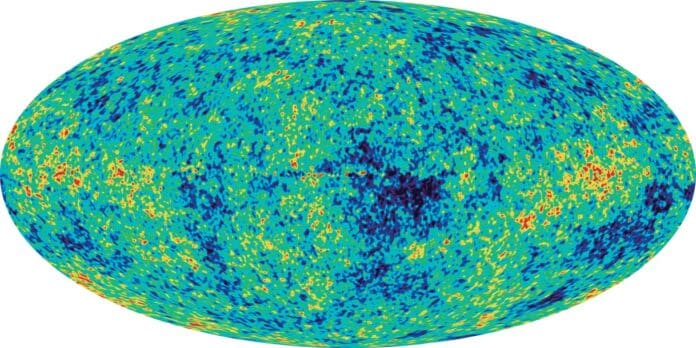More is unknown than is known. It turns out that roughly 68% of the universe is dark energy. Dark matter makes up about 27%.
Albert Einstein was the first who realize that space is not nothing. It can possess its energy, which could be the property of space itself. As more space comes into existence, more of this energy-of-space would appear. As a result, this form of energy would cause the universe to expand faster and faster.
Moreover, it could reunite two powerful physical schools of thought: quantum field theory and the general theory of relativity developed by Albert Einstein. But there is a catch: calculations and observations are so different. Two researchers from Luxembourg have shown a new way to solve this 100-year-old riddle.
Prof. Alexandre Tkatchenko, Professor of Theoretical Physics at the Department of Physics and Materials Science at the University of Luxembourg, said, “Vacuum has energy. This is a fundamental result of quantum field theory. This theory was developed to combine quantum mechanics and special relativity, but quantum field theory seems incompatible with general relativity.”
“Its essential feature: in contrast to quantum mechanics, the theory considers not only particles but also matter-free fields as quantum objects. In this framework, many researchers regard dark energy as an expression of the so-called vacuum energy: a physical quantity that, in a vivid image, is caused by a constant emergence and interaction of pairs of particles and their antiparticles – such as electrons and positrons – in what is space.”
Physicists refer to this movement of virtual entities and their quantum fields as vacuum or zero-point fluctuations. The particle pairs leave behind a certain amount of energy even though they rapidly vanish into nothingness.
Scientists noted, “This vacuum energy also has a meaning in general relativity. It manifests itself in Einstein’s cosmological constant included in his equations for physical reasons.”
The cosmological constant can be calculated directly by astrophysical experiments, unlike vacuum energy, which can only be inferred from quantum field theory formulas. The Hubble space telescope and the Planck space mission have measured the basic physical quantity, and the results are close and trustworthy. Contrarily, calculations of dark energy based on quantum field theory produce findings that correlate to a value of the cosmological constant that is up to 10120 times greater – a huge divergence, even though both quantities are supposed to be equal in the current state of physics.
Tkatchenko said, “The discrepancy found instead is known as the cosmological constant enigma. It is undoubtedly one of the greatest inconsistencies in modern science.”
In this work, scientists proposed a new interpretation of dark energy. It assumes that the zero-point fluctuations lead to a polarisability of the Vacuum, which can be measured and calculated.
Tkatchenko explains, “In pairs of virtual particles with an opposite electric charge, it arises from electrodynamic forces that these particles exert on each other during their extremely short existence.”
“This is referred to as a vacuum self-interaction. It leads to an energy density that can be determined with the help of a new model.”
In 2018, scientists presented a basic model for atoms. The concept was initially used to explain the relationship between atomic polarisability and the equilibrium characteristics of some non-covalently bound molecules and solids. Because it is simple to quantify the geometric properties experimentally, it is also possible to calculate polarisability using their formula.
Luxembourg research colleague Dr. Dmitry Fedorov said, “We transferred this procedure to the processes in the vacuum. To this end, the two researchers looked at the behavior of quantum fields, in particular representing the “coming and going” of electrons and positrons. The fluctuations of these fields can also be characterized by an equilibrium geometry already known from experiments. We inserted it into the formulas of our model and, in this way, ultimately obtained the strength of the intrinsic vacuum polarisation.”
The energy density of the self-interaction between fluctuations of electrons and positrons was then calculated using quantum mechanics. This method’s finding agrees with the cosmological constant’s observed values. This suggests that dark energy can be traced back to the energy density of quantum field interactions.
Scientists noted, “Our work thus offers an elegant and unconventional approach to solving the riddle of the cosmological constant. Moreover, it provides a verifiable prediction: namely, that quantum fields such as those of electrons and positrons possess a small but ever-present intrinsic polarisation.”
Fedorov said, “Our goal is to derive the cosmological constant from a rigorous quantum theoretical approach. And our work contains a recipe for how to realize this. The new results are the first step toward a better understanding of dark energy – and its connection to Albert Einstein’s cosmological constant. In the end, this could also shed light on how quantum field theory and general relativity theory are interwoven as two ways of looking at the universe and its components.”
Journal Reference:
- Alexandre Tkatchenko and Dmitry V. Fedorov. Casimir Self-Interaction Energy Density of Quantum Electrodynamic Fields. Physical Review Letters (2023). DOI: 10.1103/PhysRevLett.130.041601
